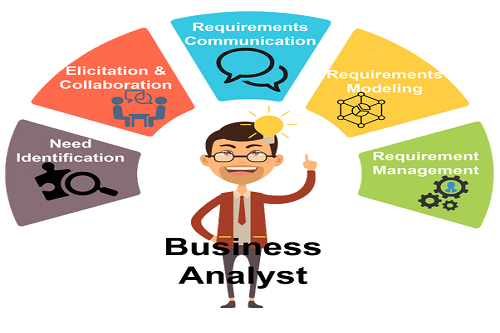It is safe to say that the software world is not just about developers anymore, of course, they are a core part of a software development team, but other members are the key factor to build successful software.
Early stereotypes that the IT world is all about programming language engineers are not the same as it was years ago, they are the elite part of the IT professionals, but now when we talk about the software landscape, it’s not only software engineers anymore.
It’s become a clear factor in the recent period that IT projects entail different types of non-tech specialists along with a technical background.
Software development project for various industries such as:
- Healthcare
- eLearning
- Aerospace
- Transportation
- Telecommunication
- Agriculture
- Pharmaceutical, etc
This field requires different approaches for development, however, the basis of development is always the same with some unique methodologies.
The outsourcing software industry is productive, but selecting one approach from a plethora of options is difficult. Outsourcing is one of the fastest ways to develop your mobile & web application, along with essential business software, at a moderate cost.
Put simply, outsourcing is the process of using a third-party service provider to handle specific business functions. Although the idea of borrowing skills, hiring talent, and boosting efficiency has been there for some time, companies now could use the concept for maximum ROI and productivity.
In the digital era, it is essential to have benefits and professional team members that can provide the best result for your enterprise.
Top software companies’ development teams not just involve developers and a CTO, certainly, they are tight knots of various skills crucial for a given phase of a project, but the success of a project involves other professionals as well.
For a successful project you need sufficient resources, a well-structured team, around 60% of projects fail in the IT industry due to the lack of knowledge about the involvement of professionals for a powerful development team.
These are the most essential roles of the software development team:
- Stakeholders
- Product Owner
- Product Designer
- Quality Assurance Engineer
- Business Analyst
- Frontend/Backend Developer
- Subject Matter Expert (SME)
- Sales & Marketing specialists
- Client Project Manager, and so on
So, in this post, we have enlisted the key roles in software development and created a list, we will discuss the topmost 5 roles that have a huge impact on the project.
5 important roles that lead to the success of your software development project
1. Product Owner

Product Owner is one of the essential roles of a software development project, as they are the one who has a concept of the product and the one who can convey the idea to the development project team.
Oftenly PO comes in the picture by C-level executives who are enthusiastic about the outcome and are aware of how profitable the project is.
You can say that the Product Owner serves as the interface between the project team and stakeholders. So, the importance of the project for a software development company dictates the hierarchy position of the PO’s in the business.
The responsibilities of the Product Owner:
- Form a list of the required functionality
- Prioritizing and re-prioritizing the required features
- Plan the business strategy
- And classify the objectives
The Product Owner aims to deliver the best solution to the problem with its software product for the end-user. And there comes the software development team, as the owners present the idea to the team but to transform it into reality, it requires a big development team.
However, the lack of the PO means several damages such as:
- Workflow issues
- Unclear requirements
- Missed deadlines
- And team impediment
2. Business Analyst

The Business Analyst is a responsible part to play in the development team as they must ensure that the requirements of the business clients are taken care and documentation are in chronically for deployment and implantation.
Other than Business Analyst, they are also known as:
- Systems Analyst
- Requirements Analyst
- Or Business Systems Analyst
The business analyst is a bridge between client and programmer as clients usually think in the direction of their goals, where programmers go for features and code lines.
The business analyst needs to take the front seat to mingle both of their thoughts for a successful project in terms of visual and technical prospects for the implements.
The BA defines the requirements of developers for the desired product and analyses the final outlook of the product along with the features for implantation as well as why and what should be done for the bug fixation.
They conduct competitor research with marketing specialists to ensure that their client’s project is viable, competitive, and better than the already existing products in the market.
The responsibilities of the Business Analyst:
- Assist in the project
- Collect requirements from the clients and users
- Documentation of technical and business essentials
- Verify that project meet the requirements or not
3. Product Designer

Product Designers is the one that assists you through the transformation of your product vision into a user-friendly real software product to compose the best user experience.
Project Designers also consider the following titles such as:
- UX designer
- UI designer
- Information architects
- User-pleaser
- Application development team
These are the key players who ensure the success of the designed product. Well, with the name such a designer in your designation comes misconception among people, such as some think of them as graphic designers that build eye-appealing designs.
However, they don’t understand that Product Designers do not only make the feel and view of your application as sharp and eye-pleasing as possible, apart from that their primary responsibilities that are:
- They are part of the whole development procedure
- Translates business goals into the real-life functional user experience
- Analysis of the interference and the comfort of users
- Evaluate the features and enhance as per the convenience of consumers
4. Quality Assurance Engineer

The role of a Quality Assurance Engineer is to verify that the developed solution matches the required specification, not compromising the quality and outlining documents to accommodate user feedback.
The quality in a QA is a must in the development team to have a proficient focus on planning tests and test cases that have to be precise, structured, organized, thorough, and well-knit.
The Quality Assurance Engineer’s quality testing activities are as per these:
- Estimating the risk factors
- Prioritizing the testing aspects
- Coordinating test as per the deadlines
- Detail reports of testing
Apart from these activities, the responsibilities fall upon a QA’s shoulder are:
- To determine procedures
- Negotiate specifications
- Keep up with the standard process
- And meditate on quality processes
Also, QAs assess the requirements of clients to ensure that they are matched with the final product.
It’s not new that some clients tend to push the development team to write faster and ship the QA phase to save time and money over quality.
They usually neglect the necessity of QA for the robust and heavily tested solution. And because of QA, you can save time and money that you might need to spend on improvements in unanalyzed, incorrect code afterward.
5. Developers

According to Evans Data Corporation, there were 26.4 million software developers in the world in 2019, a number that in 2023 is expected to grow to 27,7 million and 28.7 million in 2024.
Last but the core of the development team, developers with explicit experience in a particular technical field are the backbones of a project.
Programmers are considered as translators, who have the ability to translate the human expression into the language of machine and digital technologies that computers and technical devices comprehend along with they accomplish what the client desires to showcase in the product.
Developers are classified into three categories based upon their working experience and level of expertise, such as:
- Junior developers (Beginner)
- Middle experienced developers
- And senior developers
All of the classified programs have different fields of expertise in various languages, frameworks, digital platforms, etc.
You can pick the developers as per the requirement of the technologies and methodologies needed to apply in your project.
Bottom line is:
From this post, it is clear that each team needs essential experts to guide the project in the right direction to have great results.
That means everybody in the team needs to comprehend their role and responsibility before furthering the software development procedure.
So, it’s vital to ensure that you have all the essential personnel for the project before you start the development of the software.
And once you know the necessary team members for the project, you can enlist a software development company that matches your requirements and offers business profitability.











Comments